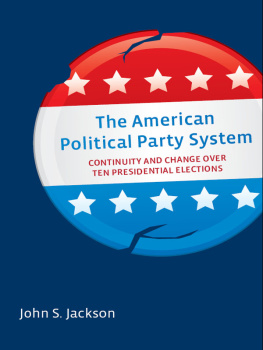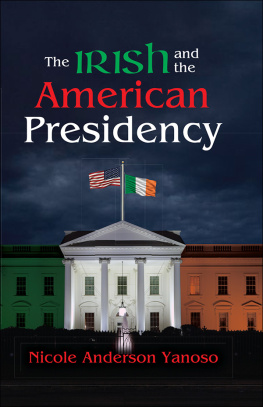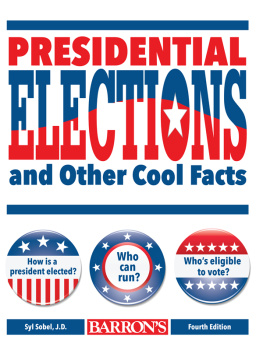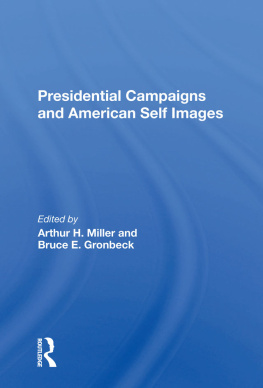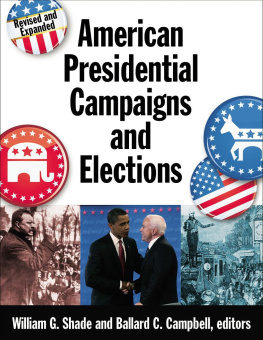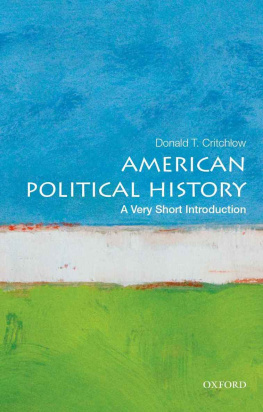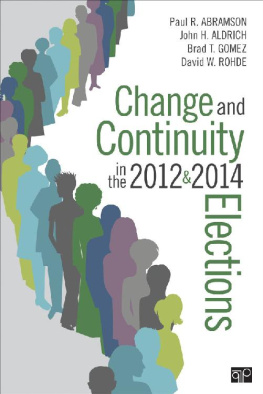Copyright 2015
THE BROOKINGS INSTITUTION
1775 Massachusetts Avenue, N.W., Washington, D.C. 20036
www.brookings.edu
All rights reserved. No part of this publication may be reproduced or transmitted in any form or by any means without permission in writing from the Brookings Institution Press.
The Brookings Institution is a private nonprofit organization devoted to research, education, and publication on important issues of domestic and foreign policy. Its principal purpose is to bring the highest quality independent research and analysis to bear on current and emerging policy problems. Interpretations or conclusions in Brookings publications should be understood to be solely those of the authors.
Library of Congress Cataloging-in-Publication data
Jackson, John S., 1940
The transformation of the American political party system : continuity and change over ten presidential elections / John S. Jackson.
pages cm
Includes bibliographical references.
ISBN 978-0-8157-2637-1 (pbk. : alk. paper)ISBN 978-0-8157-2638-8 (e-book)
1. Political partiesUnited StatesHistory. 2. Two party systemsUnited StatesHistory. 3. Political conventionsUnited StatesHistory. 4. PresidentsUnited StatesNominationHistory. 5. PresidentsUnited StatesElectionHistory. 6. Political cultureUnited StatesHistory. I. Title.
JK2261.J34 2014
324.273dc23 2014022511
9 8 7 6 5 4 3 2 1
Printed on acid-free paper
Typeset in Adobe Garamond
Composition by Cynthia Stock
Silver Spring, Maryland
Preface
Any author of a book that spans over four decades of empirical research and is based on literally thousands of surveys necessarily incurs a multitude of thank-you notes. My obligations are due to a wide variety of people, including scholars, former students, journalists, and staff members at the Paul Simon Institute at Southern Illinois University Carbondale and at the Ray C. Bliss Institute at the University of Akron.
Let me start with John C. Green at the Bliss Institute at the University of Akron. In 1992, after I had been surveying convention delegates since 1976, often working with limited resources, my attention divided by my administrative duties at SIUC, John agreed to become a cosponsor of the surveys. We combined forces and funding, and between 1992 and 2008 we designed the questionnaires and took the surveys together. The joint efforts of the Bliss Institute at Akron and the Simon Institute at SIUC gave the studies a solid grounding and the value of bipartisanship. John and I also co-authored several chapters in the State of the Parties series, which John has edited with several of his colleagues.
I want to offer a special note of thanks to Denise Baer, John C. Green, and Jerome Mileur, who read all or parts of this manuscript and offered very constructive comments and criticisms. The book benefited in many ways from their counsel, although I made the final judgment calls.
Earlier in my career William Crotty, originally at Northwestern University in Chicago and then at Northeastern University in Boston, and I coauthored two books on presidential nominations and elections. Writing and working with Bill, who is widely known and recognized in our discipline, was a pivotal experience in my professional development. I learned much from his storehouse of knowledge about American politics and parties, and I still value his friendship.
My first survey was conducted among delegates to the Democratic Partys midterm convention in Kansas City in December 1974; it was this conference that adopted the partys charter, or constitution. I followed with a survey of the Democratic Partys National Convention in 1976. I did these surveys because I was interested in party change and reform and especially in the impact of the McGovern-Fraser Commission on the parties and on the way we nominate presidents. I was assisted in both of these initial studies by SIU students, who helped take the surveys, code the questionnaires, and turn the questionnaires into punch cards, which was the technology then. We have come a long way in the way we gather and process data now, but the whole enterprise is still very labor intensive. I have had the good fortune to work with many very dedicated students, some of whom wrote research papers, theses, and dissertations based on a secondary analysis of the data.
Some, and surely not all, of these students include, in alphabetical order: Denise Baer, David Bositis, Barbara Brown, Jesse Cecil Brown, Nancy Clayton, Charles Dewitt Dunn, Mark Ellickson, Jane McBride Gates, Paul Glover, Perry Knop, Alan McBride, Tim Millmore, and Bob Slaghter. These former students have gone on to productive and distinguished careers in political science and other fields, and I like to believe that they got a good start here at SIUC working on one of my surveys. Also a note of appreciation to Brad Cole, who along with Denise Baer and Barbara Brown helped obtain the official party lists of delegate names and addresses during the conventions every four years. Of course, thousands of delegates were also crucial to the writing of this book by taking the time to fill out and return my questionnaires.
I also want to recognize the excellent help we received from faculty, students, and staff at the University of Akron, especially John C. Green, Dan Shea, Nathan Bigelow, and Rick Farmer.
The people of the Paul Simon Public Policy Institute deserve my deepest appreciation. I pursued this study through the tenure of four directors: our founder, Senator Paul Simon; his successor, Mike Lawrence; interim director Matt Baughman; and our current director, David Yepsen. Each encouraged and assisted the empirical research and the writing of this book, and I salute them for that help. In addition, staff people have been generous with their time. Earlier, Pam Gwaltney and Chris Rich and, most recently, Vanessa Sneed and Cary Day provided essential help. Carol Greenlee made especially invaluable contributions.
Many people, at both SIUC and Akron, helped collect and process the data. Most recently, and over the past several years, however, Paul Gottemoller has been my right-hand man on doing the data processing, and I literally could not have done this book without his essential and constant good work.
The party elite data gathered under my direction are supplemented by longitudinal studies done by CBS News and the New York Times. Their data are used by permission. The party identifiers data were taken from the American National Election Studies conducted every four years by the Center for Political Studies at the University of Michigan and obtained through the Inter-university Consortium for Political and Social Research. Their help is gratefully noted.
My editors at the Brookings Institution Press provided invaluable assistance. Chris Kelaher initially encouraged this project and helped launch it. Later Janet Walker stepped in at a crucial juncture and put the book on track, and her good work ensured its publication. Copy editor Diane Hammond took my sometimes meandering prose and made it much more focused and cogent. I thank them all.
Finally, a special note and tribute to my family and their assistance and support. My children, Jeffrey C. Jackson and Jill Elise Jackson, were barely toddlers when I started this research. They are now adults, grown and gone from Carbondale, but certainly still much loved and appreciated. The book is dedicated to my wife, Nancy, who has given me love and unconditional support for a very long time, and to our new grandson, Caleb, who arrived just as the book was completed. The dedication says it all.

